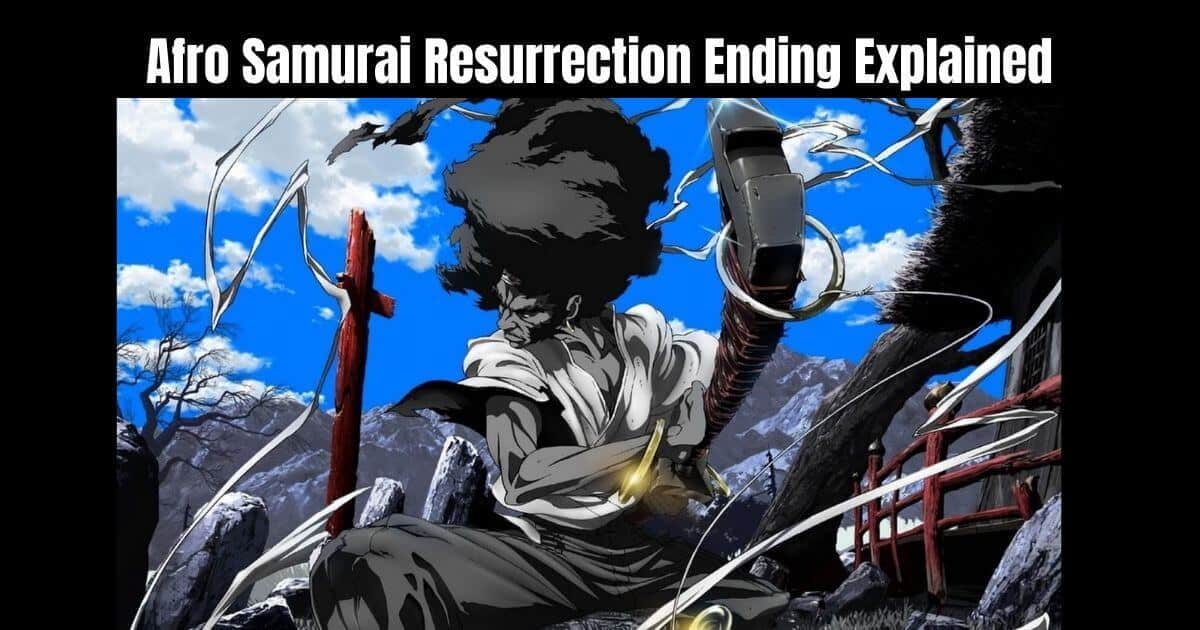In this comprehensive article, we will delve into the enigmatic ending of “Afro Samurai Resurrection” and provide analysis to shed light on its intricacies. By unraveling the complexities of the conclusion, we aim to provide a thorough explanation that will satisfy your curiosity and deepen your understanding of this captivating anime masterpiece.
The ending of the film varies between the DVD and television broadcast editions. In the series version, Afro reclaims the headband and encounters a masked man while the image of Justice appears briefly. In the Director’s Cut DVD edition, Afro successfully reclaims the Number One headband, and Justice reappears after the credits.
A Reddit user suggests a metaphorical interpretation of the ending, stating that the show’s theme revolves around how Metal (Justice) killed Funk (Afro’s father), then Rap (Afro) killed Metal (Justice). Justice reappearing symbolizes the idea that “you can’t kill Metal.” This interpretation suggests a cyclical nature of revenge and the resilience of certain concepts or forces. It focuses on Afro’s thirst for revenge and his battles against various adversaries.
The Journey So Far
Before we dive into the ending, let us briefly recap the captivating journey of Afro Samurai. Created by Takashi Okazaki, Afro Samurai is a visually stunning and action-packed anime series that follows the story of a skilled swordsman seeking vengeance against those responsible for his father’s death. The protagonist, Afro, embarks on a perilous quest, clashing with formidable foes and facing obstacles along the way.
Unveiling of the Plot
In “Afro Samurai Resurrection,” the sequel to the original series, we witness Afro’s return to the screen as he navigates a world brimming with danger and treachery. The story takes a gripping turn when Afro’s long-lost sister, Sio, resurfaces and resurrects their father, the Number One Headband holder. This unexpected twist sets the stage for an epic showdown, pitting Afro against formidable adversaries in a battle for vengeance and redemption.
The Climactic Showdown
The ending of “Afro Samurai Resurrection” culminates in a climactic showdown between Afro and his resurrected father. The battle is fraught with intense emotion and highlights the intricate choreography that has become a trademark of the series. As Afro confronts his father, the audience is treated to a visually stunning display of swordsmanship coupled with deep-rooted familial conflicts.
The Symbolic Themes
Underneath the surface, “Afro Samurai Resurrection” incorporates symbolic themes that add depth and complexity to the narrative. The quest for vengeance, the burden of legacy, and the cycle of violence all explored throughout the series. It is culminating in the poignant ending.
Afro’s Transformation and Redemption
Throughout the series, Afro undergoes a profound transformation, both physically and emotionally. The ending of “Afro Samurai Resurrection” serves as a pivotal moment in his journey, where he confronts his own demons and seeks redemption. As the battle unfolds, Afro grapples with his inner conflicts and strives to break free from the vicious cycle of violence that has plagued his life. Get to know about Psycho Pass Ending Explained now.
The Bittersweet Resolution
Without delving into explicit spoilers, it is important to acknowledge the bittersweet nature of the resolution in “Afro Samurai Resurrection.” The ending leaves room for interpretation and reflection. It is inviting the audience to contemplate the consequences of revenge and the potential for healing and growth. It is a poignant reminder that closure never always results from the form. We expect but rather in the lessons we learn and the paths we choose to take.
Is afro samurai resurrection canon?
“Afro Samurai: Resurrection” is considered canon within the “Afro Samurai” series. It serves the original “Afro Samurai” anime series. “Afro Samurai: Resurrection” continues the story of the main character, Afro. He embarks on a new journey to seek revenge and confront new enemies. The events and characters introduced in the film consider part of the official continuity of the series.
Afro Samurai headband
The Afro Samurai headband is a significant item in the Afro Samurai series. It holds immense importance within the show’s storyline. In the Afro-Samurai universe, there are two headbands known as the Number One Headband and the Number Two Headband. The Number One Headband represents a sacred cloth headband. It bestows various powers and qualities upon its wearer, such as godhood, immortality, supernatural abilities, and vast knowledge. The one who possesses the Number One Headband can rule the world. However, to become the new Number One, the current wearer must defeat and killed [1]. The Afro Samurai headband is a popular item among fans. It is a fictional concept inspired by the Afro Samurai series. It holds significance within the show’s narrative but does not possess any magical or supernatural powers in real life.
Is Afro Samurai: Resurrection a sequel?
Yes, Afro Samurai: Resurrection is indeed a sequel. It is a 2009 Japanese anime television film that serves as a sequel to the miniseries Afro Samurai [2]. The film continues the story of Afro Samurai. It features the talents of Samuel L. Jackson and Lucy Liu [2]. It results from the first season and follows Afro as he engages in a new series of battles against various adversaries [6].
The film was directed by Takahiro Harada and Fuminori Kizaki [1] and was produced by a team that includes Eric Garcia, Samuel L. Jackson, and Chris Carlisle [1]. The screenplay was written by Josh Fialkov, Eric S. Calderon, Yasuyuki Mutō, Takashi Okazaki, and Leo Chu [1]. Afro Samurai: Resurrection aired on Paramount Network [4] and received positive reviews as a worthy sequel to the Afro Samurai story. So, you are interested in watching Afro Samurai. We recommend watching the original series first, followed by the movie, and then the second season.







